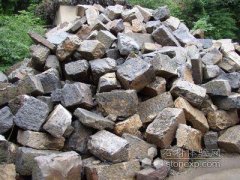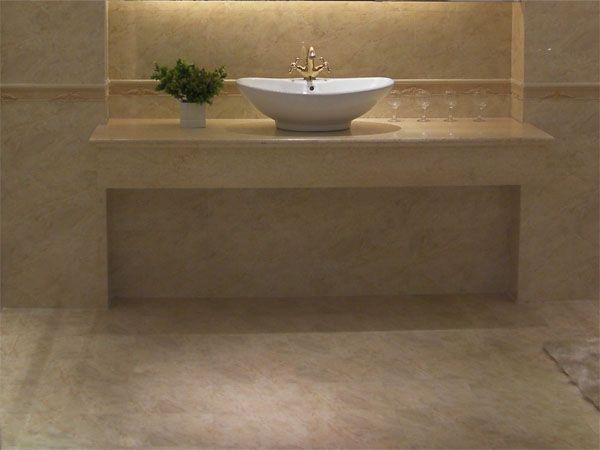The Use of Declaimed Stone in Building Construction
Building construction, demolition and renovation activity produces nearly 160 million tons of waste every year - almost one- third of the country’s non-hazardous solid waste.
Coupling this with the quickly diminishing landfill space in the United States and rising landfill fees, planned building deconstruction, including material salvage and reuse, is now an increasingly considered strategy in both the architectural and construction communities.
Natural stone with its durability and flexibility of use is an excellent candidate for such practice. Adaptable to a range of applications, natural stone can almost always be reused and thus need not contribute to landfill waste. Moreover, extending the life cycle of the product reduces its overall environmental impacts, and using reclaimed stone may even contribute to green building programs, such as the U.S. Green Building Council’s LEED (Leadership in Energy and Environmental Design) certification.
Applications
Salvaged stone lends itself to numerous reuse applications. Stone can be crushed or fragmented, or whole products can simply be refinished or reformed. Some examples for reuse include the following:
Slabs and tiles can become paving material. This non-structural application does not require as extensive a testing procedure as cladding or masonry.
Stone that is unsuitable as a structural or finish material can be used to construct gabion retaining walls. Stone (rip-rap) gabion walls are more cost effective than reinforced concrete and can easily be constructed by non-specialist local labor.
Smaller pieces can act as gravel fill or concrete aggregate.
Natural stone in powder form can be used in fertilizer or as a sidewalk bed. Its inherent mineral constituents, such as calcium and magnesium, are needed nutrients for soil and plant life.
Flat stone fragments can be strategically laid to create a mosaic walkway, while bulkier cobbles can line a flower bed or pathway.
Stone fragments can be adhered together to generate a completely new appearance.
When a building is scheduled to be remodeled or replaced, save pieces of the original structure to incorporate in the new edifice. This can provide a sense of history or nostalgia.
Deconstruction, Salvage and reuse methods
The U.S. Environmental Protection Agency estimates that by the year 2030, approximately one fourth of the buildings that existed in 2000 will be replaced.8 The number of buildings that will be demolished and the waste produced will therefore be extensive; however, if these buildings are deconstructed and the components sold for reuse, most of this waste – up to 90% - can be diverted from the waste stream, and new buildings can consume less money during construction.
Additionally, reuse of stone will result in a more favorable environmental profile for the building due to avoiding consumption of the energy, water, and materials needed to extract and fabricate new products.
The greatest hindrances to successful material salvage are a lack of communication among professionals and the absence of an organized system for the sale of the components and materials. However, if designers weave extra research into the design process, materials can be selected from salvage yards or even existing buildings slated for demolition.
Contractors overseeing building demolition may profit from choosing deconstruction rather than mechanical demolition. The deconstruction process is more labor- and time-intensive initially, but the long-term cost savings can be significant as landfill fees will be decreased and the deconstructed components can be resold.10 Stone is a particularly valuable material and can generate profit if deconstructed carefully. Currently, salvaged stone is not consistently less expensive than virgin stone, especially when the material comes from countries with low labor costs. Often, designers consider imported stone to be the only way to find the color, size, and other properties desired for the project goals; if salvaging natural stone is to become a more common practice, designers, clients, contractors, and others need to support the market for such stone products.
Natural stone can last the lifetime of a building and beyond, but designing for deconstruction is especially important for the sustainable use of stone. Standardized mechanical connections are more conducive to eventual deconstruction and salvage than are mortared connections, and designing in layers allows material to be easily separated later.11
Benefits
Disassembly and reuse of stone products can prove advantageous on both economic and environmental fronts. With regard to the former, several studies show that deconstruction of buildings is more cost-effective than demolition, particularly due to the resale of materials.
The reduction in landfill fees resulting from a lower volume of debris for disposal may also play a role. On the other side of the cash register, unless the stone to be used is considered to be antique, salvaged stone can be less expensive than virgin material. In turn, when used in appropriate applications, this can provide an opportunity for project cost savings.
On an environmental level, implementing second-life materials eliminates the energy, water, and other resources needed to generate new products, ultimately avoiding associated impacts to ecosystems. The magnitude of this savings is so substantial that the practice of reusing materials can earn credits in the US Green Building Council’s LEED program. Specifically, Materials & Resources credits 3, 4 and 5 can be secured for using salvaged material, material with recycled content, and material purchased locally, respectfully.
As landfill space continues to shrink and emphasis on material conservation grows, consideration of alternatives to sending construction and demolition waste to landfills is essential. Indeed, it is profitable.
Monthly Recommendation
Recommended News







